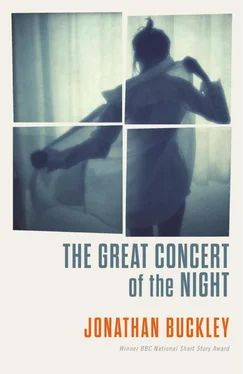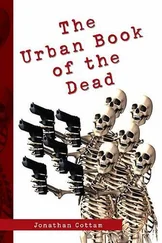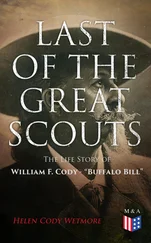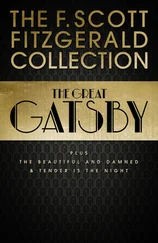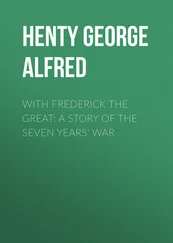Jonathan Buckley - The Great Concert of the Night
Здесь есть возможность читать онлайн «Jonathan Buckley - The Great Concert of the Night» весь текст электронной книги совершенно бесплатно (целиком полную версию без сокращений). В некоторых случаях можно слушать аудио, скачать через торрент в формате fb2 и присутствует краткое содержание. Город: London, Год выпуска: 2018, ISBN: 2018, Издательство: Sort Of Books, Жанр: Современная проза, на английском языке. Описание произведения, (предисловие) а так же отзывы посетителей доступны на портале библиотеки ЛибКат.
- Название:The Great Concert of the Night
- Автор:
- Издательство:Sort Of Books
- Жанр:
- Год:2018
- Город:London
- ISBN:978-1-908745-78-1
- Рейтинг книги:4 / 5. Голосов: 1
-
Избранное:Добавить в избранное
- Отзывы:
-
Ваша оценка:
- 80
- 1
- 2
- 3
- 4
- 5
The Great Concert of the Night: краткое содержание, описание и аннотация
Предлагаем к чтению аннотацию, описание, краткое содержание или предисловие (зависит от того, что написал сам автор книги «The Great Concert of the Night»). Если вы не нашли необходимую информацию о книге — напишите в комментариях, мы постараемся отыскать её.
The Great Concert of the Night — читать онлайн бесплатно полную книгу (весь текст) целиком
Ниже представлен текст книги, разбитый по страницам. Система сохранения места последней прочитанной страницы, позволяет с удобством читать онлайн бесплатно книгу «The Great Concert of the Night», без необходимости каждый раз заново искать на чём Вы остановились. Поставьте закладку, и сможете в любой момент перейти на страницу, на которой закончили чтение.
Интервал:
Закладка:
Jonathan Buckley
THE GREAT CONCERT OF THE NIGHT
For Susanne Hillen and Bruno Buckley
JANUARY
Five minutes past midnight: a call from my sister. It’s not right that I should be on my own, she tells me. Nobody should be alone at New Year. She sends a picture of herself and Nicholas, glasses raised to the phone; in the background, some people I don’t recognise. They’ve had a really nice evening; Nicholas excelled himself in the kitchen, and there’s been enough champagne to float a dinghy. ‘Even you would have enjoyed yourself,’ she says. I report that I too have had a nice evening. ‘Doing what?’ Emma demands. A film, a book, a drink. ‘Sounds great,’ she says. ‘Next year, you’re coming to us. No excuses accepted.’
I watched Le Grand Concert de la Nuit. Entranced again by Agamédé; entranced again by Imogen. The film transmits a presence that both consoles and torments.

Looking up from the book, I gaze at the chair in the corner of the room, the chair in which Imogen used to read; the lamp beside it is unlit. Gazing into the shadow, I make something like an after-image arise: turned to the side, with her legs curled up, she props the book on the arm of the chair, angled into the light. The presence is weaker than that of Agamédé. Often, when delighted or surprised by something she had read, she would read it aloud. One evening, I remember, she came upon the story of Blaise Pascal’s escape from death. ‘Listen to this,’ she said. I can hear her intonation, the rise of her voice.
On the night of November 23rd, 1654, terror-struck by the storm that was then in full spate, the horses that were pulling Pascal’s carriage bolted and plunged from the Pont de Neuilly. The reins snapped, leaving the vehicle perched on the lip of the road. This narrow escape, so the story goes, occasioned the revelation that Pascal recorded in the document that bears this date, a document known as the Memorial.
The year of grace 1654
Monday, 23 November, feast of Saint Clement, Pope and Martyr, and of others in the Martyrology.
Eve of Saint Chrysogonus, Martyr, and others.
From about half past ten in the evening until half past midnight.
FIRE.
GOD of Abraham, GOD of Isaac, GOD of Jacob, not of the philosophers and scholars.
Certitude. Certitude. Feeling. Joy. Peace.
So it begins. Joy, joy, joy, tears of joy, we read later. On Pascal’s death, in August 1662, this piece of parchment was discovered by his manservant, folded inside the lining of his master’s doublet. A ‘mystic amulet’, Nicolas de Condorcet called it. Pascal had spoken to nobody about the episode that was recorded in the Memorial.

On my desk, two photos from Stourhead. The first: Imogen play-acting in front of the temple – a nymph in flight from a savage pursuer, her scarf flying as she looks back in terror; her hands are raised in a way that I have seen only in paintings by Poussin. The other: she looks directly into the lens, and her face almost fills the frame of the picture; her gaze is acute and open, offering herself to be seen as fully as any lens could allow.

Only twelve tickets sold today.

It was some time in mid-June when I first saw Imogen, in room seven. This is where people linger, because of the monsters. Casts of aborted foetuses, fearfully misshapen, occupy one section: we have examples of phocomelia, sirenomelia, acrania, anencephaly and cyclopia. There are two terrible little skeletons, each a conjoined pair: Dicephalus dibrachius diauchenos and Cephalothoracopagus monosymmetros. And above the skeletons, suspended on wires, in a posture of crucifixion, hangs the stillborn child. Its torso has been excavated to expose the major veins and arteries; the limbs have been flayed, so that the musculature may also be studied. The muscles and blood vessels gleam like varnished wax, but this is not a model. Its head is thrown back and its teeth are bared, as if in a scream; its face is directed into the light that comes from the window; it has no eyes, but it stares back with its vacant sockets. This is where I first saw Imogen.
I took note because she stayed at the hanging child for a long time. No – this is not quite true. I took note because she struck me as an attractive woman, and she was alone. Not that she was a woman who might be approached. She was on her own; few people come to the museum alone.
I was in room seven to rehang the print of Claude-Ambroise Seurat, ‘the human skeleton’. Fussing with the spirit level, I observed her reflection in the glass that covers the print. She continued to gaze into the eyeless face. She looked steadily into it, as if in contemplation of its meaning. Frowning, she seemed to be moved to sorrow. When I left the room, she did not look up; she had not so much as glanced at me.
Some time later, I returned. She was still there, examining the pages from Vaught’s Practical Character Reader. As if she had been waiting for an audience, she read aloud one of the captions: ‘The reason this man is an unreliable husband is because he is very weak in Conjugality and Parental Love and exceedingly strong in Amativeness. Young ladies, beware of such men as husbands.’ She laughed, and looked at me. The laugh was light and small. ‘Now I know,’ she said.
My favourite page, I said, was the one showing the woman with a white zone on the crown of her head; the white zone denotes ‘The Corn Faculty, or the Exact Source of Corns’. I introduced myself and told her that there would be a tour at four o’clock. The tour would encompass parts of the building that were otherwise out of bounds.
Imogen thanked me. I left her to continue her perusal of the Practical Character Reader.

After the tour, Imogen returned to room seven. Certain items required further inspection, it seemed; her demeanour was pensive. When, after several minutes, she did not reappear, I moved to a spot from which I could see her, obliquely. Crouched at the Auzoux models, she peered at the dissected head, and smiled. My first thought was that I, the spy, was the cause of the smile. Then it seemed that the smile signified appreciation of the finely crafted objects. I approached.
She did not look away, even when I was standing alongside. ‘Hard to believe this is just paper and glue,’ she said.
Auzoux’s papier-mâché was special, I informed her. Chopped rags and calcium carbonate and powdered cork – poudre de Liège – went into the recipe. That was why Auzoux’s models have lasted so well, I explained. But they have become very delicate. The models had been designed to be taken apart and reassembled, but this one would no longer bear handling. I paused.
She was scrutinising the piece as closely as a detective at a crime scene. ‘Go on,’ she said.
I told her about the factory that Louis Thomas Jérôme Auzoux had founded in his home town. In the very first issue of Nature, Auzoux’s model plants and plant organs were recommended for study. French cavalry regiments kept Auzoux models of horses’ teeth for reference, I told her. This made her look up; I stopped.
‘It’s interesting,’ she said. Her smile did not suggest irony.
Читать дальшеИнтервал:
Закладка:
Похожие книги на «The Great Concert of the Night»
Представляем Вашему вниманию похожие книги на «The Great Concert of the Night» списком для выбора. Мы отобрали схожую по названию и смыслу литературу в надежде предоставить читателям больше вариантов отыскать новые, интересные, ещё непрочитанные произведения.
Обсуждение, отзывы о книге «The Great Concert of the Night» и просто собственные мнения читателей. Оставьте ваши комментарии, напишите, что Вы думаете о произведении, его смысле или главных героях. Укажите что конкретно понравилось, а что нет, и почему Вы так считаете.
